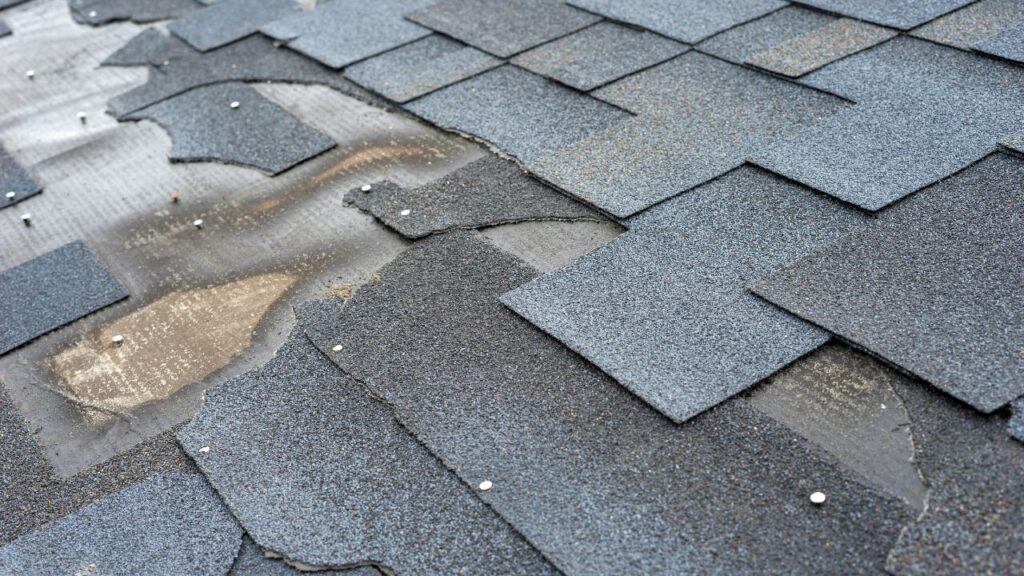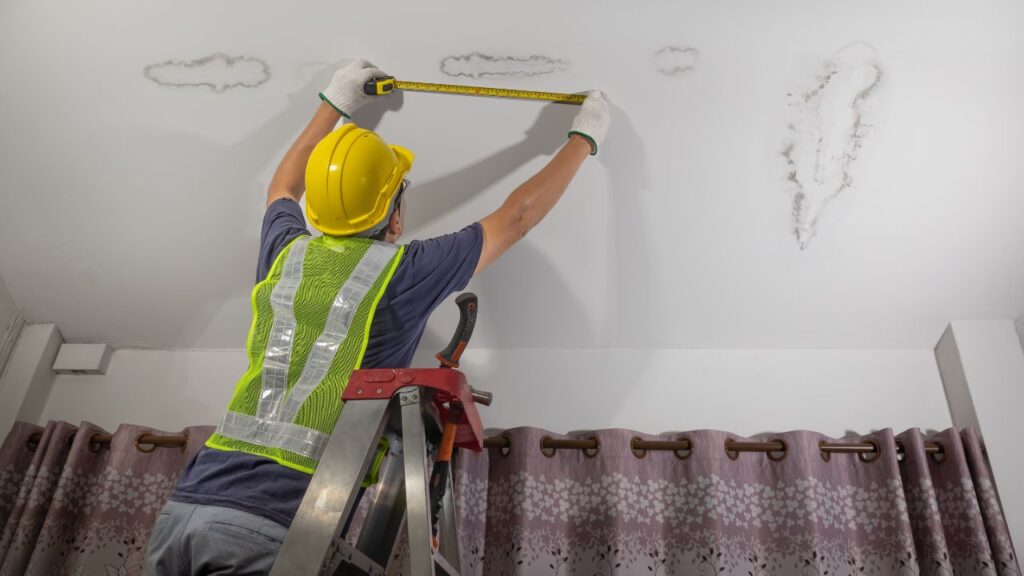Top Concerns for Homeowners Needing a New Roof
Roof replacement – those two words that strike fear into any homeowner’s heart. It’s like suddenly realizing your house is wearing a leaky, old hat, and you have to pick out a whole new one. Not only that, but you need to pick the right style, the right price, and find someone who won’t mess up the whole job. The decisions made during this process can have long-lasting effects on a home’s integrity and value. When it comes to home maintenance, it’s one of the most daunting tasks. The good news is that we’re here to help. In this article, we will explore the top concerns homeowners needing a new roof typically encounter and provide insights to help navigate these challenges.
Initial Steps and Preparation for Homeowners Needing a New Roof
Assessing Roof Condition
The first step is to assess the current condition of their existing roof. This involves looking for signs of damage such as leaks, missing shingles, or sagging areas. Professional inspections can provide a thorough evaluation, revealing hidden issues that might not be visible to the untrained eye. Homeowners should also consider the age of their roof; most roofs last between 20 to 30 years, depending on the materials used.


Choosing the Right Roofing Material
One of the primary concerns for homeowners needing a new roof is selecting the appropriate roofing material. The choice of materials can significantly impact the roof’s durability, aesthetics, and overall cost. Common options include asphalt shingles, metal roofing, wood shakes, and slate tiles. Each material has its pros and cons:
- Asphalt Shingles: Cost-effective and easy to install, but may not last as long as other materials.
- Metal Roofing: Highly durable and energy-efficient, but can be more expensive.
- Wood Shakes: Attractive and natural-looking, but require more maintenance.
- Slate Tiles: Extremely durable and aesthetically pleasing, but very costly and heavy.
Budgeting and Financing
Budgeting is a critical concern for homeowners needing a new roof. Roof replacement is a significant investment, and understanding the total cost, including materials, labor, and potential additional expenses, is essential. Homeowners should obtain multiple quotes from reputable contractors to ensure competitive pricing. Additionally, exploring financing options such as home improvement loans or insurance coverage can help manage the financial burden.
Key Considerations During Roof Replacement
Finding a Reliable Contractor
Selecting a trustworthy and skilled contractor is paramount for homeowners needing a new roof. A reliable contractor ensures the job is done correctly and efficiently, minimizing potential issues in the future. Homeowners should seek recommendations from friends and family, read online reviews, and verify the contractor’s credentials, including licenses and insurance. It’s also beneficial to ask for references and view past projects to gauge the quality of their work.
Understanding Warranties
Warranties are a crucial aspect for homeowners needing a new roof. There are typically two types of warranties to consider: manufacturer’s warranties for the roofing materials and workmanship warranties from the contractor. Understanding the coverage, duration, and conditions of these warranties can provide peace of mind and protect against future repair costs. Homeowners should ensure they receive all warranty information in writing before proceeding with the project.
Navigating Building Codes and Permits
Compliance with local building codes and obtaining the necessary permits is a concern. Building codes ensure that roofing projects meet safety standards and regulations. Homeowners should familiarize themselves with these requirements and ensure their contractor handles the permit application process. Failing to comply with local codes can result in fines, delays, and potential issues when selling the home.
Post-Installation and Long-term Maintenance
Disposal of Old Roofing Material
The disposal of old roofing material is a practical concern for homeowners needing a new roof. Roof replacement generates a substantial amount of waste, and homeowners must consider the environmental impact of disposal. Reputable contractors typically handle the removal and disposal of old materials, but homeowners should confirm this aspect before starting the project. Recycling options for materials like asphalt shingles can also be explored to reduce environmental impact.
Addressing Structural Issues
Structural issues are a critical concern for homeowners needing a new roof. During the roof replacement process, underlying structural problems such as weakened supports or damaged decking may be uncovered. Addressing these issues promptly is essential to ensure the new roof’s stability and longevity. Homeowners should be prepared for potential additional costs and work closely with their contractors to resolve any structural concerns.
Maintenance and Longevity
Understanding the maintenance requirements and expected longevity of the chosen roofing material is crucial. Regular maintenance, such as cleaning gutters, inspecting for damage, and addressing minor repairs, can extend the roof’s lifespan. Homeowners should choose materials that align with their maintenance preferences and ensure they are aware of the recommended upkeep practices.
Enhancing Home Value and Market Appeal
Impact on Home Value
For homeowners needing a new roof, the impact on home value is a significant consideration. A new roof can enhance curb appeal and increase the overall market value of a home. Potential buyers often prioritize homes with recent roof replacements, as it signifies reduced maintenance concerns. However, the extent of the value increase can depend on the quality of the roofing material and the overall condition of the home.
Energy Efficiency
Energy efficiency is another concern. Modern roofing materials and techniques can significantly improve a home’s energy efficiency by providing better insulation and reducing heat absorption. Options like cool roofs, which reflect more sunlight and absorb less heat, can lower energy bills and create a more comfortable living environment. Homeowners should discuss energy-efficient options with their contractors to make informed decisions.
Adapting to Environmental Factors
Local Climate Considerations
Homeowners needing a new roof must take local climate conditions into account. Different roofing materials perform better in certain climates. For instance, metal roofs are ideal for areas prone to heavy snowfall due to their durability and snow-shedding capabilities, while clay tiles are well-suited for hot, dry climates because of their heat resistance. Understanding the local weather patterns and selecting materials accordingly can extend the roof’s lifespan and enhance its performance.
Timing and Weather Considerations
Timing the roof replacement project is another important concern for homeowners needing a new roof. Weather conditions can significantly impact the installation process. Ideally, homeowners should plan their roof replacement during favorable weather conditions, avoiding periods of heavy rain, snow, or extreme temperatures. Proper timing can help ensure a smooth and efficient installation, reducing the risk of weather-related delays or complications.
Ensuring Functional and Efficient Roof Systems
Ventilation and Insulation
Proper ventilation and insulation are key considerations. Adequate ventilation helps regulate temperature and moisture levels in the attic, preventing issues like mold growth and ice dams. Improved insulation can enhance energy efficiency and reduce heating and cooling costs. Homeowners should discuss ventilation and insulation upgrades with their contractor as part of the roof replacement project.
Dealing with Unexpected Issues
Homeowners needing a new roof should be prepared for unexpected issues that may arise during the project. Hidden damage, weather delays, or supply shortages can impact the timeline and cost of the roof replacement. Having a contingency plan and maintaining open communication with the contractor can help manage these challenges effectively. Flexibility and proactive problem-solving are key to navigating unforeseen obstacles.
Managing Risks and Final Steps
Insurance and Claims
Understanding insurance coverage and the claims process is essential for homeowners needing a new roof, especially in cases of damage caused by storms or other natural events. Homeowners should review their insurance policies to determine what is covered and the extent of the coverage. Documenting the roof’s condition with photos and keeping detailed records can facilitate the claims process if needed. Consulting with the insurance provider before starting the roof replacement can clarify any uncertainties.
Communicating with Neighbors
Roof replacement can be noisy and disruptive, so it’s courteous to inform neighbors about the upcoming project. Clear communication can help manage expectations and minimize any inconvenience caused by the construction process.
Final Inspection and Approval
A thorough final inspection and approval process is crucial for homeowners needing a new roof. Once the installation is complete, homeowners should conduct a detailed inspection with their contractor to ensure the work meets quality standards and all agreed-upon aspects have been addressed. Any discrepancies or issues should be resolved before making the final payment.
Treasure Valley Roofing: The Answer for Homeowners Needing a New Roof
Homeowners needing a new roof face numerous concerns that require careful consideration and informed decision-making. The good news is that Treasure Valley Roofing is here to help. By working with Treasure Valley Roofing, homeowners can address any concerns proactively, leading to a durable, energy-efficient, and aesthetically pleasing roof that enhances the home’s value and provides peace of mind for years to come. For expert guidance, contact Treasure Valley Roofing at (385) 475-3033 or email us at admin@treasurevalleyroof.com.

